Rye bread is huge in some parts of the world but has so far struggled to establish a significant audience in the UK. What can bakers do to change this?
Rye bread has a lot going for it – packed with flavour and fibre, it is a key element of many European bread markets. And yet, for all its strengths, selling rye bread is not without challenges in the UK: it’s often perceived as being heavy with a strong taste that many consumers shy away from.
Given such concerns, how can rye bread be better marketed to Brits?
Growing consumer interest in where their food comes from means the origin of a loaf is a good starting point.
“When marketing these breads, it’s essential to talk about origin, as provenance is something that catches consumers’ attention,” says Erwan Inizan, sales director, northern Europe, at Bridor.
He adds that interest in rye bread has been fuelled by a combination of consumers travelling further afield, sampling different bread styles, and with people moving to the UK bringing new bread styles with them.
“There has been a rise in interest in ryes and dark ryes that are traditionally made in Poland, Germany and central Europe,” Inizan adds. “This excitement for darker breads has had the knock-on effect of increasing interest in Nordic and Scandinavian breads.”
Traditional rye breads – made with 100% rye – can be very dense and could put off British consumers used to a lighter loaf. The answer, here, is to combine the rye with other flours.
Bridor’s Nordic Loaf, for example, is a rich recipe based on buckwheat, rye, malted wheat and malted barley flours and a blend of six seeds.
A blend of flours is more suitable to the UK consumer, suggests Bakels marketing manager Michael Schofield.
“Blending rye with wheat flour produces bread that is lighter in colour, with a crumb they are more accustomed to and volume more suitable as a sandwich carrier,” he explains. This enables rye bread to be marketed with terms such as light or dark rye, according to the level of rye flour within the loaf.
“[This will inform] consumers as to how heavy or strong the loaf will be. Additionally, numeric values such as 40% rye, 60% rye etc., clearly communicate the level of rye within the loaf, and thus the strength of colour and rye flavour,” Schofield adds.
Blending rye to get these lower percentage loaves is initially the best way forward, says Sophie Grey, founder of London-based artisan bakery business Crazy Baker. She adds that mixing rye with other flours, for example white flour, is a good way to lighten the loaf, as is using increased hydration.
St Pierre Groupe (until recently Carrs Foods) says its Baker Street Seeded Rye and Baker Street Rye & Wheat bread offer the rich flavour of traditional German Rye bread but without the dense texture. “They are made with a sourdough starter, are traditionally stone-baked and are surprisingly light in texture, yet the popular rye flavour is still typically rich and nutty,” adds the manufacturer.
Whether 100% rye or containing a lower proportion, Grey advises that the language used to describe the bread is important when marketing rye.
“Use language that brings the bread to life,” she says, suggesting terms such as delicious, satisfying, full of flavour, nutritious and healthy.”
And promoting health benefits could prove a strong sales driver, with Mintel researchers finding that 32% of consumers wanted to see, above all other characteristics, more bread with nutritional benefits such as a high fibre content [Bread & Baked Goods – UK, September 2018].
“There has been a lot of research published on the many health benefits of eating rye bread,” says Grey. “These include beating bloating and digestive problems, curbing appetite, balancing hormones, banishing energy slumps, keeping your heart healthy, protecting against breast cancer and topping up your nutrients.”
Inizan at Bridor adds that rye is low on the glycaemic index, meaning it won’t spike blood sugar one minute and leave a sluggish feeling a few hours later. “It also contains magnesium, which helps control blood pressure, and fibre that can also help to reduce cholesterol, [making it] a fantastic alternative to many other breads from a health perspective,” he says.
But, not all bakers want to use health claims when marketing loaves.
“I am wary of making health claims about any of our products, but we do try to offer customers the information needed to make an informed decision,” says Martin Hunt, managing director at Joe’s Bakery in Bristol.
“As for leveraging dietary fibre to promote rye, the link would be difficult to get across without sounding dull, it’s better instead to simply make good bread.”
And this, he suggests, is what successful marketing of rye boils down to. Hunt offers tasting samples of his rye loaves, allowing customers to try the bread and decide if it’s for them.
He believes the answer is getting the loaves to a high enough standard that people will buy rye solely based on it being a good loaf.
“In time, we believe that there is greater potential for rye, but the quality needs to be good enough that the consumer will want to buy it because it is good bread, as opposed to being rye bread.”
Case study: Sourdough biscuits
Its origins may be in bread, but sourdough is increasingly used in other bakery items such as buns, cakes, pizza bases, crumpets and biscuits.
Oxford-based Modern Baker uses a sourdough starter to create sourdough biscuits, placing emphasis on the nutritional benefits of fermentation.
“Natural fermentation is essentially the platform technology across all of our product range. So, for us it’s much more than a flavour and a buzz word,” explains co-founder Leo Campbell.
“Three years of research on the human digestive system has shown us that long-form fermentation, with the right proving process, can become a major weapon in tackling the sorry state of Britain’s sweet baking, and adds wonderful flavours industrial ingredients can’t imitate.”
The business says its loaves and sourdough biscuits, which are available at Planet Organic and Selfridges as well as independent stores and fitness studios in London, are fermented over 48 hours to reduce sugars and optimise fibre, meaning the products are “actively good for human digestion”.
“Every ingredient adds to nutrition, so our biscuits naturally stand apart, as much for what they don’t contain as for what they do,” adds Campbell.
The sourdough biscuit range comprises five flavours: Cranberry, Pecan & Oat; Chocolate Chip & Almond; Ginger & Turmeric; Double Chocolate & Hazelnut; and Salted Peanut & Chocolate Chip.
In its recipe book, Modern Baker includes recipes for sourdough products such as cinnamon buns, peanut butter blondies, pitta breads and flavoured sourdough cakes, such as ginger, apple and carrot & walnut.
Campbell says the use of sourdough in these recipes brings buttery, caramel and slightly sweet nutty back notes, and can boost other flavours, particularly spices such as ginger and turmeric.
Wrapped breads tap the trend
Wrapped bread brands are tapping into the sourdough market with new launches:
- Brace’s Bakery unveiled its Welsh Legends range of loaves earlier this year, with each one given a name that celebrates Welsh culture. The range includes five loaves containing added sourdough.
- Warburtons extended its Toastie range with a Toastie with Sourdough loaf, which it said, “brings the distinct flavour of sourdough to the mainstream wrapped bread category.” The loaf contains 3% dried sourdough.
- Meanwhile, Hovis introduced a White Bloomer Baked with Sourdough, which contains 4% wheat sourdough that has been slowly fermented for 72 hours.
Free-from sourdough
The idea of combining two of the biggest trends in bakery, free-from and sourdough, is a bit of a no-brainer – but producing gluten-free sourdough isn’t without its challenges.
The process of creating a gluten-free starter is similar to that of a wheat-based product: fermenting flour and water together to create a stable environment for natural yeast and bacteria to grow.
But, while the technique is similar, the lack of gluten makes a starter more difficult to control during fermentation, says Nathan Giles, bakery technologist at Campden BRI.
“This is because the dough is less stable than a wheat-based sourdough, where the structure is based on gluten. A free-from sourdough is less resilient than a gluten-based version, with a tendency to split more due to the acidity of the sour,” he says, adding that starches and gums tend to be used to help bind the water and create consistency to the dough.
“Baking also requires more care. If the oven temperature is too high, there is a tendency for the dough to set before it has a chance to rise properly in the oven,” he states.
Giles explains that, as with any sourdough, the product will vary depending on the flour used.
“Millet flour gives a strong acidic flavour and a texture profile similar to that of a rye sour,” he says. “A mixture of cassava and chickpea flour will give a lighter texture as well as less acidic sourdough notes. Buckwheat flour gives a very earthy flavour to the dough and needs to be used alongside another flour to help soften that.”
Gail’s Bakery, which has stores across London and the south east, developed a gluten-free sourdough following requests from customers. The sourdough was the first product made in its purpose-built gluten-free kitchen.
“Since opening we’ve had queries about whether we had plans to create a decent gluten-free loaf,” says Gail’s head baker Roy Levy. “While gluten-free is not our everyday baking, we were inspired by our customers to explore it and have been working on it for a long time.”
The gluten-free loaf is made with the same process as Gail¹s other sourdoughs, the difference being the flours used.
“We insisted on making a gluten-free loaf using the same techniques as our regular loaves. We made a sourdough starter as we would for any other loaf and nurtured it. Many gluten-free loaves contain eggs or dairy, but we wanted to avoid this and keep the loaf suitable for vegans in doing so,” Levy adds.

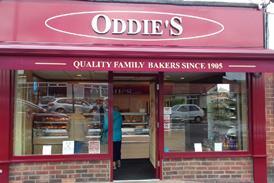

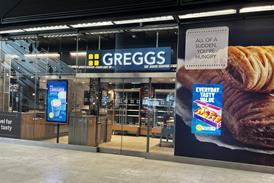
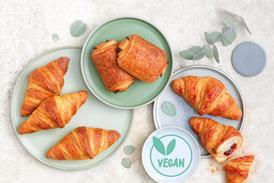
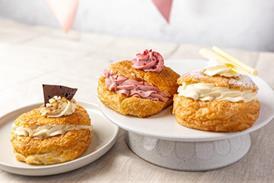
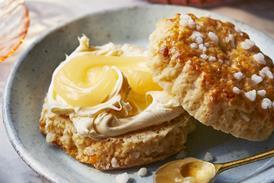

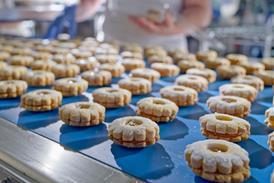
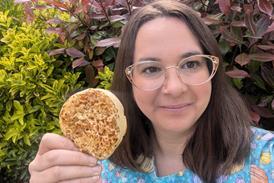






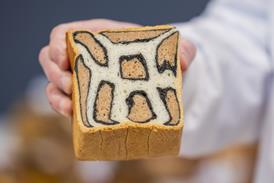
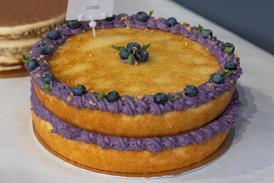
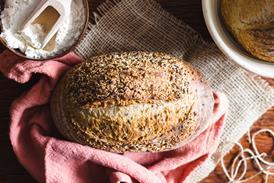

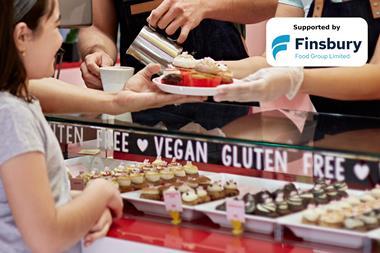


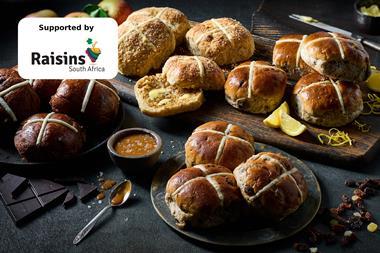
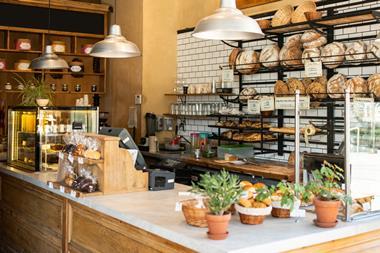

No comments yet